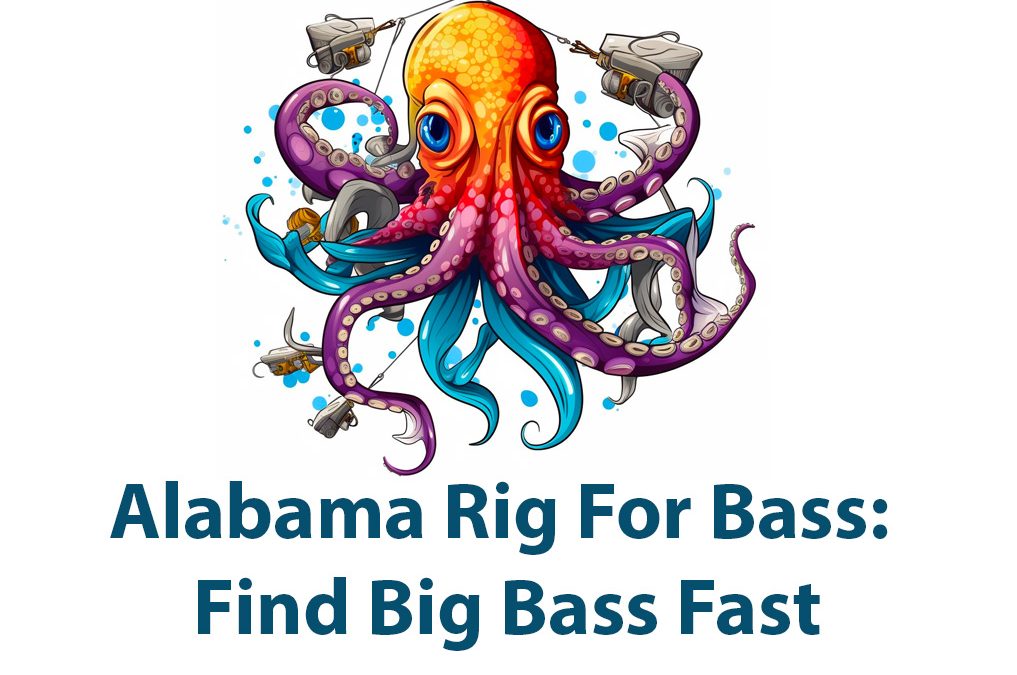Introduction
Hey everyone! Nothing nearly compares to the rush of an Alabama rig strike for an avid fisherman. It’s a challenge that calls for accuracy, good fortune, and a ton of patience. If you’ve ever used an Alabama rig, you know what I’m talking about; it’s a remarkably successful method for catching bass. But pay attention if you’re not familiar with the Alabama rig. No matter what time of year you’re fishing, this article will provide you with a detailed tutorial on how to use it to catch largemouth, smallmouth, and spotted bass. So let’s get started.
Knowing about the Alabama Rig
It’s crucial to understand what the Alabama rig is and how it operates before we begin. The Alabama rig is fundamentally a multi-lure setup that resembles a school of baitfish. Imagine a jig head with several metal wires protruding from it, each with a different lure (often a soft plastic bait, such a swimbait or a grub) attached. The several lures simulate a school of baitfish when you put it out into the water and begin reeling it in, and the bass can’t help but pursue it.
The Alabama rig now comes in a variety of sizes and forms, and each one has a specific purpose. The standard rig includes five wires, although some rigs have three or even eight wires. Generally speaking, your rig will be more effective in deeper seas the more wires it has since the more “baitfish” it is imitating. Additionally, each wire may be rigged with a different bait, giving you the opportunity to experiment to find what works best for you.
Alabama rig fishing for largemouth bass
With good cause, largemouth bass are undoubtedly the most well-liked game fish in the nation. They’re enormous, hostile, and fantastic to catch. Catching them with the Alabama rig is really effective. You should employ a rig with five wires while Alabama rigging for largemouth bass. Largemouth bass are drawn to the rig’s bigger profile, and the many lures will increase their chances of striking. Cast it out into the sea using your preferred soft plastic baits (I prefer swimbaits). For largemouth fish, the slow, steady retrieve is typically the most productive.
Alabama rig fishing for smallmouth bass
Although they can be a little trickier to land than largemouth bass, smallmouth bass are just as much pleasure to capture. Use a smaller rig with three or four wires when using the Alabama rig to catch smallmouth bass. The smaller profile of the rig is more attractive to smallmouth bass because they often feed on smaller baitfish. The soft plastic lures you use for largemouth bass can also be used for smallmouth bass. When you cast the rig out, let it reach the bottom completely before beginning to reel it back in with a quick, steady retrieve.
Fishing for spotted bass with the Alabama Rig
The Alabama rig can also be used to catch spotted bass, which are a blast to catch. You should use an Alabama rig with four or five wires when targeting spotted bass with it. Remember to utilize smaller sizes when using the same soft plastic baits you use for largemouth bass. Smaller lures work better since spotted bass typically eat smaller baitfish. The rig is cast out, let to sink, and then is reeled in slowly.
Best Times to Fish with an Alabama Rig
What time of year is ideal for using the Alabama rig, then? It depends, is the response. The rig can be useful all year round, but there are several times of year when it performs at its best. Let’s look more closely.
Winter
Winter may be a difficult time of year for bass fishermen. The bass are less active and harder to detect because of the chilly weather. But don’t worry! Even in the winter, you can catch largemouth, smallmouth, and spotted bass with the appropriate technique and equipment. And using an Alabama rig is one of the greatest ways to go about it.
Let’s start by discussing largemouth bass. Most fishermen target these fish, and with good cause. They are a blast to capture and can grow to be enormous. You should concentrate on fishing deep water if you want to catch largemouth with an Alabama rig in the winter. Search for structures where the fish may be holding, such as drop-offs, submerged trees, and other features. Be patient and slowly collect your equipment. You might have to work a little harder to obtain a bite because the fish might not be as active as they are in the warmer months.
Smallmouth bass are excellent targets for winter fishing since they often prefer cooler water conditions. In rocky locations, particularly near ledges and drop-offs, keep an eye out for them. Additionally, you might want to consider fishing around bridges and other man-made structures. Using an Alabama rig to catch smallmouth requires you to change up your retrieve. Try retrieving slowly and steadily first, then quickly and jerkily to change things up. Don’t be scared to try new things because smallmouth are frequently more active than largemouth during the winter.
Let’s talk about spotted bass lastly. These fish are frequently disregarded, but an Alabama rig may make catching them a delight. You should concentrate your efforts in deeper water since spotted bass frequently inhabit there. Consider casting your rig close to any steep drop-offs you come across. You might have greater luck catching a bite as spotted bass are also more active in the winter than largemouth.
There you have it, then. You should have no trouble catching largemouth, smallmouth, and spotted bass on an Alabama rig in the winter if you keep in mind these suggestions and fishing spots. Just keep in mind to be patient, change up your retrieve, and scan the area for any potential holding structures or drop-offs. Have fun fishing!
Pre-Spawn
You’ve come to the perfect place if you want to catch largemouth, smallmouth, and spotted bass like a pro during the prespawn season. First of all, you should be aware that an Alabama rig is a fantastic tool for pursuing all three species. Let’s first discuss the definition of prespawn before getting into the specifics.
Prior to the spawn, bass begin to migrate towards shallower water and intensify their feeding throughout the prespawn season. Depending on where you are in the nation, this often occurs around the late winter through the early spring. Let’s move on to the important part now: catching some bass!
Starting with largemouth bass, please. In the mouths of creeks or small coves off the main lake is one of my favorite places to seek for prespawn largemouths. Because the water is a little warmer and there is ample cover, they like to linger around here. I prefer to run the Alabama rig near the bottom of the water column and bounce it off any available structures to catch them on an Alabama rig.
I enjoy searching for smallmouth bass in waters with a rocky bottom and crystal clear water. Check out rough ledges, points, and drop-offs, as well as deep crevasses. Smallmouths are frequently still holding in deeper water during the prespawn, so use a bigger weight to lower your Alabama rig to where they are. Don’t be hesitant to switch up your bait presentation if you aren’t getting any bites because smallmouths are also renowned for being finicky eaters.
Let’s talk about spotted bass lastly. Usually found in reservoirs, these fish like to gather around objects like brush piles and rocky points. Use of a smaller Alabama rig and smaller baits is a critical technique for capturing spotted bass during the prespawn. You’ll get more bites and have a better chance of catching these tenacious fish if you do this.
When utilizing an Alabama rig in the prespawn, there are a few basic considerations you should bear in mind in addition to these specific advice for each type of bass. First, remember to retrieve slowly to mimic the lethargic motion of cold-water bass. Second, it’s crucial to monitor the weather and modify your fishing plan as necessary. The bass may be more active and keen to chase bait if it’s overcast or raining outside. Finally, don’t be hesitant to try out various sizes, colors, and baits to see what the fish are feeding on.
In conclusion, employing an Alabama rig to catch largemouth, smallmouth, and spotted bass during the prespawn season is an excellent idea. You’ll boost your chances of catching some trophy-sized fish by using these suggestions and choosing the appropriate spots to fish. So venture outside and begin casting, and don’t forget to enjoy yourself and the splendor of nature.
Spawn
I want to give some advice with you today about using an Alabama rig to catch largemouth, smallmouth, and spotted bass during the spawn. Fishing during this season can be difficult, but with the appropriate methods, you can still reel in some large fish. So let’s get started!
Now, it’s crucial to pay attention to the water’s temperature when it comes to the spawn. The water will normally be between 60 and 70 degrees Fahrenheit during the spawn. Fish will be more active and moving around during this time as they prepare to spawn. In light of this, it’s critical to focus your efforts in the areas where bass will be actively spawning at this time.
Grass, bushes, or logs that provide cover, such as shallow water, are common places for largemouth bass to spawn. I advise targeting these places when using an Alabama rig for largemouth bass and retrieving the rig gently through the cover to simulate a school of baitfish moving in and out of the cover.
On the other hand, smallmouth bass typically spawn in slightly deeper water in areas with more stony or gravelly bottoms. When using the Alabama rig to catch smallmouth bass, I advise fishing around rocky points or drop-offs and altering your retrieve speed to simulate a school of baitfish darting in and out of the rocks.
Finally, although spotted bass can be found in many different places, they usually spawn in deeper water than largemouth or smallmouth bass do. When utilizing the Alabama rig to catch spotted bass, search for support in 10 to 20 feet of water, such as submerged logs or boulders. Because spotted bass are more picky at this time of year, be cautious to recover your gear slowly.
Using scented baits is one of my favorite suggestions for Alabama rig fishing during the spawn. If a fish is reluctant to bite, adding a fragrance to your rig can make all the difference. To attract those big fish, try employing the scents of garlic or crawfish.
In conclusion, using the Alabama rig to fish for largemouth, smallmouth, and spotted bass during the spawn can be successful. To imitate a school of baitfish, keep in mind to monitor the temperature of the water, target the appropriate areas, and adjust your retrieval pace. You can improve your chances of catching that trophy fish by including scented bait. Get outside right now and catch some fish!
Summer
Ah, summertime’s beautiful and seductive days! What better way to pass the time than holding a fishing rod in your hand and launching an Alabama rig into the warm waters in the hopes of catching some largemouth, smallmouth, or spotted bass? I’ll give some particular advice and locations for catching each of these three varieties of bass on an Alabama rig throughout the summer in this article.
Let’s talk about the Alabama rig first things first. If you’re unfamiliar, it’s just a wire frame with numerous arms that can hold several lures at once to simulate a school of baitfish. It stirs up the water a lot when it is recovered, which can draw large fish hungry for a quick meal.
Let’s now discuss the intricacies of using an Alabama setup to capture each variety of bass during the summer.
Bass, largemouth:
Largemouth bass can frequently be found during the summertime in or close to weed patches, lily pads, and other kinds of aquatic vegetation. When selecting your location, bear in mind that they also enjoy congregating in shaded locations and beneath docks. Using smaller baits on the outer arms and a larger bait in the center of an Alabama rig will help you catch largemouth bass. This will mimic the classic feeding scenario for these species, which is a school of smaller baitfish being pursued by a larger predator fish.
Smallmouth bass:
Smallmouth bass are renowned for their tenacity and preference for moving lures. They enjoy colder water temperatures in the summer and are frequently spotted close to rock formations, ledges, and drop-offs. Using lighter baits in more natural colors, such as brown or green, like worms or minnows, is a fantastic tip for catching smallmouth bass on an Alabama rig. As smallmouth bass are known to feed on these invertebrates, this will make the rig resemble a school of crayfish or other tiny bottom-dwelling animals.
Spotted Bass:
In terms of their predilection for weed beds and vegetation, spotted bass are comparable to largemouth bass, but they also like to congregate close to points and drop-offs. They are also renowned for their powerful attacks and ferocious eating practices. Try combining bigger and smaller lures with some brightly colored ones when using an Alabama rig to catch spotted bass. This will provide a frantic, chaotic situation in the water that feeding spotted bass may find alluring.
Let’s now discuss some specific sites where these three bass species can be caught using an Alabama rig in the summer.
When the water is cooler and the fish are more active, try fishing near weed beds in the early morning or late evening for largemouth bass. Look for areas with lots of cover, such as lily pads or sunken logs; largemouth bass frequently use these areas as their preferred hiding and feeding grounds.
Concentrate your efforts on rock structures and drop-offs for smallmouth bass since these areas offer the fish a stable source of food and colder water temps. To replicate the movement of a school of bottom-dwelling animals, retrieve slowly and steadily while keeping an eye out for any potential ambush locations.
In addition, search for areas with lots of cover, such as weed beds and overhanging trees, for spotted bass. It’s common for these fish to ambush their target, so be ready for a swift, powerful strike. To agitate the water and draw in as many spotted bass as you can, use a range of lure sizes and colors.
In conclusion, using an Alabama rig to capture largemouth, smallmouth, and spotted bass during the summer may be an exciting and gratifying experience. You’ll boost your chances of catching some large, stunning fish by paying attention to these specific recommendations and casting to the appropriate areas.
Fall
You’ve come to the correct location if you’re hoping to catch some largemouth, smallmouth, or spotted bass during the approaching fall fishing season. You may reel in all three different varieties of bass with the help of the adaptable and efficient Alabama rig.
The locations and advice for using an Alabama setup to catch each type of bass follow now. Largemouth bass will be our first topic. Try to locate locations with dense vegetation and structure, such as weed beds, logs, or rocks, as these fish are known to be in shallow waters during the fall season. Near these spots, cast your Alabama rig and allow it to drop to the bottom before gradually reeling it in. To make your lure appear more realistic, pay close attention to altering your retrieval speed and employing irregular movements. Because they are more cautious and discriminating eaters than their competitors, largemouth bass require a patient and steady approach.
Now let’s talk about smallmouth bass. In the fall, these fish like to live in deeper waters. Keep an eye out for drop-offs and areas where the water’s depth varies rapidly. Cast your Alabama rig in this vicinity once more, but this time wait until it has reached the bottom before beginning your retrieve. Since smallmouth bass are more aggressive than largemouth, consider making your lure move quickly and jerkily to simulate a school of baitfish running for cover. Since smallmouth are known to school up at this time of year, you might even be fortunate enough to catch several of them all at once.
Let’s talk about spotted bass lastly. These fish can be located in a variety of depths and regions, but stony areas like riprap or boulders are a good place to start your search. Because spotted bass are opportunistic feeders, experiment with a variety of quick and slow retrieves to find what works best. Additionally, it’s a good idea to experiment with various sizes and color combinations for your swimbaits until you discover what the fish are feeding on.
Use a strong line (fluorocarbon or braid is suggested) and a medium-heavy rod and reel when it comes to equipment. Don’t take the chance of losing a significant catch because of shoddy gear. To make sure you can successfully cast your lure close to the desired position, practice your casting technique beforehand. Don’t give up if it takes a few tries to obtain a bite; it may take some trial and error to locate the ideal retrieve manner and position.
Equipment
The appropriate rod, reel, and line can make all the difference when bass fishing with an Alabama setup. I’ve spent a lot of time experimenting with various pieces of equipment because I love to fish with this setup. I’m going to give my tips in this post for choosing the best rod, reel, and line for using an Alabama rig to catch largemouth, smallmouth, and spotted bass.
We’ll begin with the rod. You should seek for a medium-heavy or heavy action rod with a rapid tip when choosing a rod for an Alabama rig. You’ll have the strength and sensitivity needed to detect bites and set the hook swiftly after doing this. Although you can use an 8-foot rod if you’re fishing in deep water, I personally prefer a 7-foot rod. The rod’s handle is another crucial consideration. Look for a handle that is secure in your hand even when it gets wet and is comfortable to grasp.
The reel will come next. You need a reel with a high gear ratio for an Alabama rig so that you can swiftly reel in your catch. A minimum gear ratio of 6:1 is preferred, however greater gear ratios are also available. Additionally, you’ll need a reel with a powerful drag system because bass can be a difficult opponent. I prefer a baitcasting reel, but you can use a spinning reel if that’s what you’re more accustomed to.
Let’s talk about line last. Use a braided line with a minimum test strength of 50 pounds when using an Alabama rig to catch bass. This will provide you the stamina and toughness you need to handle the weight of the rig and reel in large fish. You must set the hook fast since braided line has no flexibility, which is vital to remember. Choose a monofilament or fluorocarbon line with a minimum test strength of 20 pounds if you prefer them.
Best Soft Plastics To Fish On An Alabama Rig
Soft plastic baits might be a good option when using an Alabama rig to catch bass. It can be daunting to choose from the many various kinds of soft plastic baits available. I’ll include some of my favorite soft plastic baits for an Alabama rig that I use to catch bass in this article.
The traditional swimbait comes first. The swimbait is a fantastic option because it resembles a real fish’s movement. I enjoy using a paddle tail swimbait on an Alabama rig in specifically. Bass can be drawn in from afar by the paddle tail’s intense motion and vibration in the water. Selecting a swimbait that corresponds to the size of the baitfish in the area where you are fishing is crucial. Smaller swimbaits should be used if the baitfish are small. Select a larger swimbait if the baitfish are bigger.
Then, with my Alabama rig, I like to use a fluke-style bait. When the fluke-style bait is retrieved, there is a lot of activity, which can cause a bass to strike. To enable weedless rigging, I like utilizing a lighter weight hook with a fluke-style bait. This prevents the bait from becoming tangled when it is fished in dense cover.
A creature bait is yet another successful bait to use on an Alabama rig. The numerous tentacles and appendages on creature baits can cause a lot of water movement and disruption. This is especially useful when fishing in dimly lit or foggy environments. On my Alabama rig, I prefer to use creature baits that are 3 to 4 inches long.
Not to mention, don’t undervalue the effectiveness of a finesse worm on an Alabama rig. Finesse worms can be strung in a variety of ways to provide various aquatic effects. Additionally, depending on the weight of the employed jig head, they can be fished at various depths. I like to pick a finesse worm’s color to match the baitfish in the region I’m fishing when utilizing an Alabama rig.
After discussing some of the top soft plastic baits for an Alabama rig, let’s move on to some effective fishing techniques. I prefer to fish a paddle tail swimbait with a slow, consistent retrieve. This can cause a bass to strike since it resembles the motion of an actual fish. I favor employing a twitch and pause retrieve when using a fluke-style bait. As a result, the bait can alter course and dart, which can be quite successful at drawing strikes.
I prefer to fish with a slow, methodical retrieve when utilizing a creature bait. This causes a lot of movement in the water by allowing each limb and tentacle to move independently. Finally, depending on the weight of the jig head, I prefer to fish a finesse worm at various depths. If you’re using an Alabama rig to fish a finesse worm, a slow, bouncing retrieve may work well.
Let’s now discuss where to fish with these baits. In the winter, largemouth bass are frequently seen in shallow water, especially around rocky outcrops and drop-offs. Smallmouth bass are frequently found in deeper water near structure and tend to favor lower water temps. Although they can be found in a range of water depths, spotted bass generally favor clean water.
I prefer to concentrate on rocky outcrops and drop-offs in shallow water while using an Alabama rig to catch largemouth bass. This is especially useful in places where the water is a little warmer, like the vicinity of a power plant. In deeper water, smallmouth fish are frequently found near ledges and rock heaps. I enjoy fishing slowly and keeping the soft plastic bait close to the bottom while going after smallmouth bass with it.
Around rocky outcrops, spotted bass are frequently encountered in a range of water depths. I enjoy fishing slowly and keeping the soft plastic bait near to the bottom while pursuing spotted bass with an Alabama rig. I’ve discovered that spotted bass are frequently pickier than largemouth or smallmouth bass, so it’s crucial to try out several tactics and baits until you find what works.
In conclusion, soft plastic baits might be a fantastic option when bass fishing on an Alabama rig. Your chances of landing a prize bass can be improved by selecting the appropriate bait and fishing it properly. As you experiment with different methods, keep in mind to match the size and color of the baitfish in the area you are fishing. Have fun fishing!
Conclusion
There you have it, guys, a thorough explanation of how to use the Alabama rig to catch bass throughout the year. Although the Alabama rig isn’t a magic device that attracts fish on its own, it may be a very successful technique for catching large bass with time and effort. Try out various rigs, baits, and retrieves to find one suits you the best. Always remember to abide by local fishing laws and restrictions. Get outside right now and catch some fish!
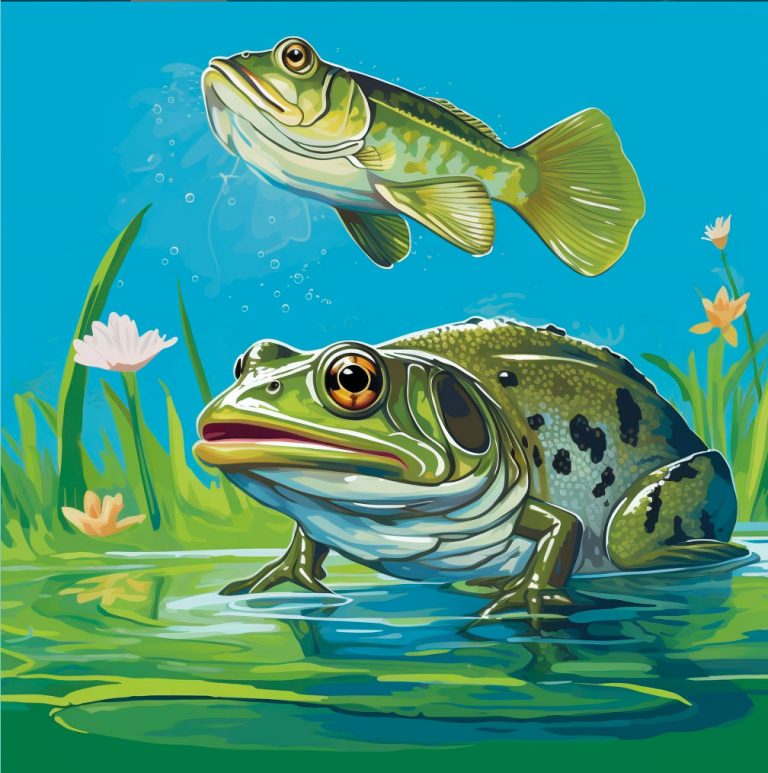
15 Topwater Frog Techniques: Catch The Biggest Bass
Introduction Hey there, fellow anglers! If you’ve clicked on this article, then I’m sure you’re just as excited as I am to learn the top 15 techniques for topwater frog fishing for bass. But before we jump into those techniques, let me give you a little background on why topwater frog fishing is such an […]
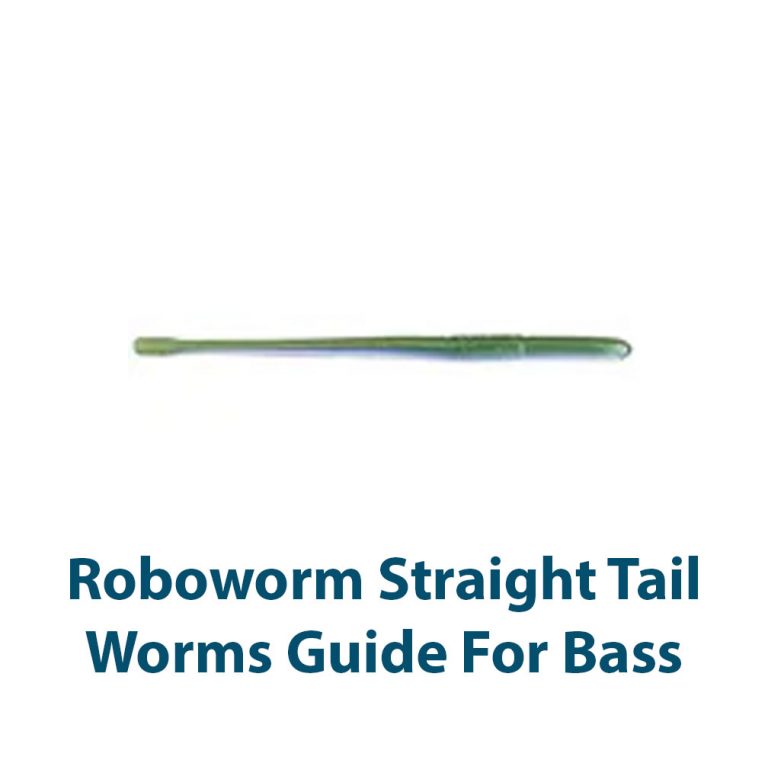
Roboworm Straight Tail Worm Guide For Bass
Introduction I couldn’t help but feel puzzled as I sat at the edge of the pier. Even after using a variety of lures and approaches, I had fished for hours without any success. Although the water was calm and clear, the fish didn’t seem to be anywhere to be found. My friend Bob arrived in […]
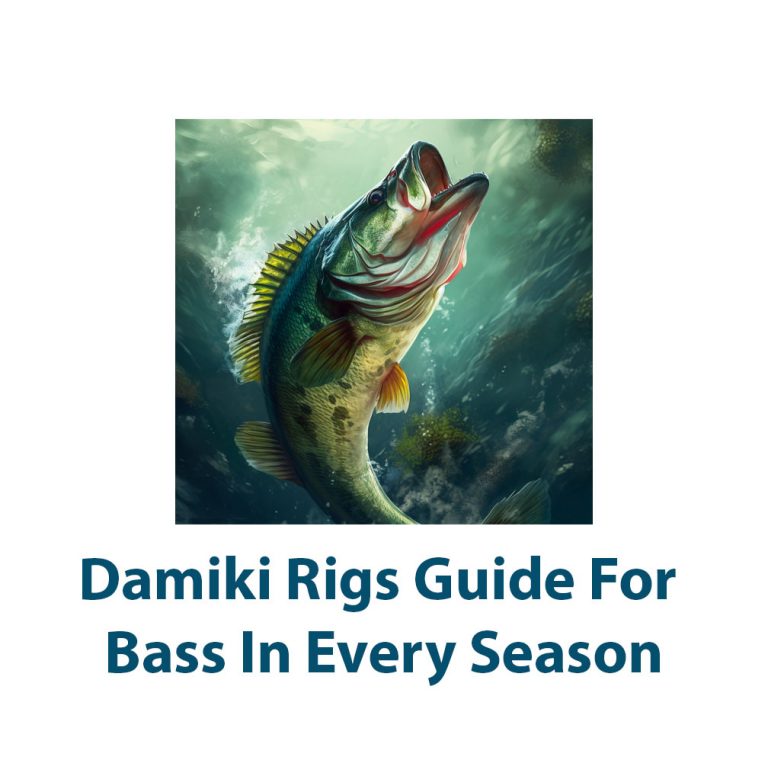
Damiki Rig Guide For Bass In Every Season
Introduction As an avid angler, I have always been fascinated by the various fishing techniques used to catch different types of fish. Over the years, I have studied and experimented with different types of rigs, baits, and lures to improve my fishing game. However, one rig that has consistently remained in my tackle box is […]
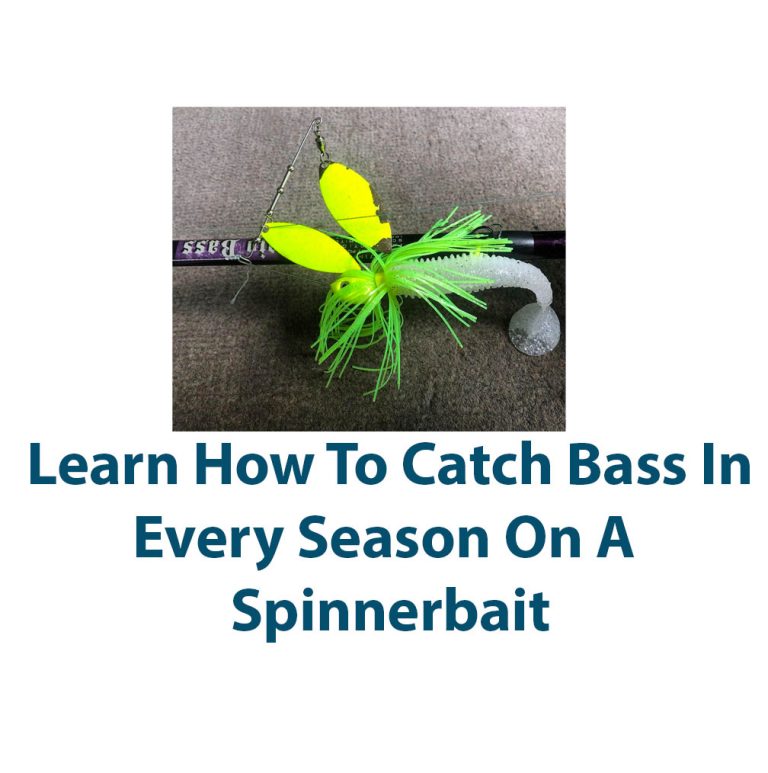
Catch Bass In All Seasons On A Spinnerbait
Introduction Hello and welcome to my tutorial on using spinnerbaits to capture bass throughout the year. I’ve spent countless hours as an avid angler honing my skills and discovering new strategies to capture more fish. Since I can remember, spinnerbaits have been a mainstay in my tackle box, and for good reason. They are adaptable […]

Jerkbaits For Largemouth, Smallmouth and Spotted Bass
Have you ever heard of a jerkbait? If you’re an avid bass fisherman, chances are you have. But if you’re not quite sure what a jerkbait is or how to use it, don’t worry. I was in the same boat (or should I say, fishing boat) as you not too long ago. However, I have […]
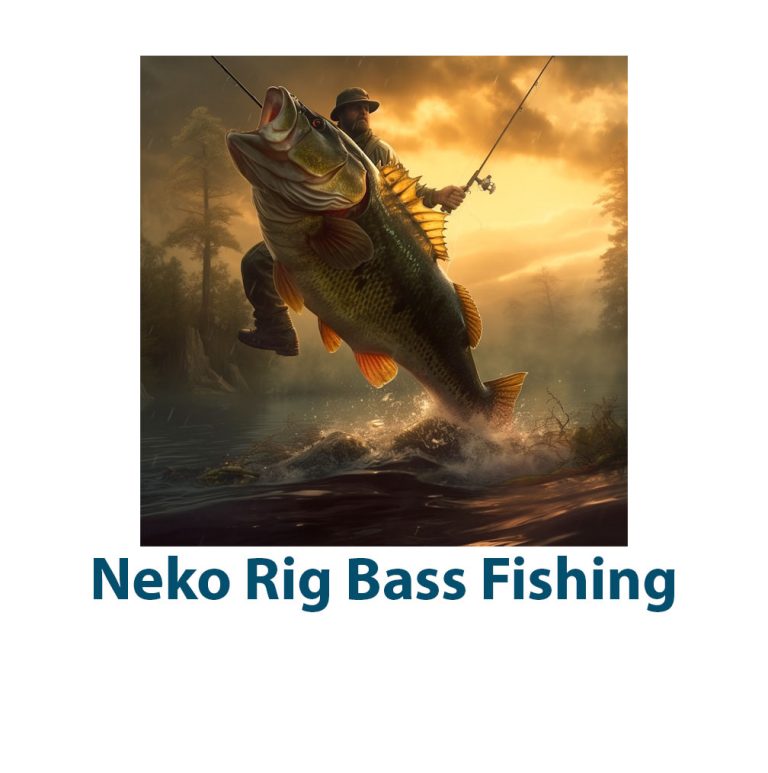
Catch Bass In Every Season With Neko Rigs
Introduction I’ve been an avid bass fisherman for years, but it wasn’t until I started using the Neko Rig that I truly started catching bass in every season. Whether it’s winter, pre-spawn, spawn, post-spawn, summer or fall, the Neko Rig has proven to be a highly effective tool for catching bass. In this article, I’m […]

